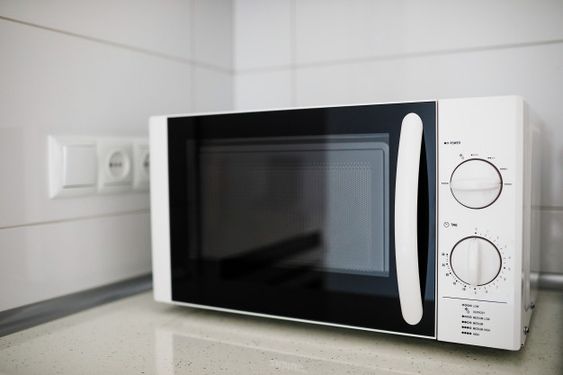Creating a cozy summer home that serves as a peaceful retreat requires careful selection of appliances that enhance comfort without compromising on style or efficiency. At Appliances 4 Less Little Rock, we cater to residents in Little Rock, Benton, Conway, and Pine Bluff with an array of open box, scratch, and dented appliances that are perfect for elevating your summer living. Here’s our guide to the essential appliances for a cozy summer home.
LG microwave oven is one of the main heating appliances in every family, with the characteristics of convenient and fast heating lamp. Because it needs to be repaired when it is accidentally damaged, you may wish to read this professional article, which can help you understand the maintenance skills of LG microwave oven.

(1) Inspection of vulnerable parts
Step 1: When the magnetron is normal, the filament resistance is less than 1Ω, the resistance between the filament and the tube shell is ∞, and the magnetic steel should not crack. When the magnetron is damaged, some manifestations are open circuits between the two terminals of the filament, some manifestations are that the two terminals form a conductive path to the shell, and some cannot be directly measured. Magnetron damage will cause the LG microwave oven to run quietly, not heat, or burn the power fuse, high-voltage fuse, high-voltage diode, etc.
Step 2: When the high-voltage diode is normal, use the multimeter Rx10k block to measure, forward conduction (with a certain resistance, about 150K ohms), reverse cutoff (infinite resistance); use other resistance blocks to measure the forward and reverse resistances are not connected. High-voltage diode damage is mostly breakdown, that is, both forward and reverse are connected. Fault phenomena caused by damage to high-voltage diodes, such as burning high-voltage fuses, or LG microwave ovens not heating up when running, LG microwave ovens not heating up and increasing noise.
Step 3: The capacity of high-voltage capacitors is between 0.8uF-1.2uF, the resistance between the two terminals of the capacitor and the shell is ∞, and there is a 9MQ resistor in parallel inside. Under normal circumstances, set the pointer multimeter to the Rx10k gear, and connect the two test pens to the two poles of the high-voltage capacitor respectively. At the beginning of the measurement, there is a certain resistance but it is not high, and then it gradually rises to about 9MQ. In actual maintenance, high-voltage capacitor failures are relatively low, and common forms of damage are pole pieces or insulation wood ignition, and some are failure or breakdown. Phenomena caused by damage to high-voltage capacitors include burning power fuses or high-voltage fuses, LG microwave ovens can run but not heat up, etc.
Step 4: When the high-voltage transformer is normal, the primary winding resistance: about 1.5-3Ω, the secondary winding resistance; about 100~200Ω, the filament winding resistance: less than 1Ω, and the resistance of each winding to the iron core: ∞. Most of the damage to high-voltage transformers is short circuit between high-voltage windings. The phenomenon caused by damage will cause the operating current to increase, there will be odor, or it will not heat up or smoke during operation.
Step 5: When the mechanical timer/fire selector is normal, measure the resistance at both ends of the motor, turn the time knob clockwise, and the timing switch contacts will be turned on. The fire contacts are on and off when the motor rotates. The timing switch contacts are damaged, causing the whole machine to not work;

Step 6: The switch contains several touch switches. Under normal circumstances, there is a slight contact switching sound when the switch is closed. The fault after damage is manifested as the whole machine not working, not heating during operation, burning the power fuse when the door is opened, etc.
Step 7: The thermal relay is also called a thermal cut-off device, a temperature limit switch, a thermistor switch, etc., which is an automatic reset thermistor protection element. Set the multimeter to the RxIO position, and connect the two test leads to the two terminals of the thermal cut-off device respectively. The resistance should be 0 ohms at room temperature, and the resistance should be infinite at high temperature and reach its marked value. When the temperature drops to a certain value, it automatically becomes 0 ohms.
Step 8: Bidirectional diode Set the pointer multimeter to the Rx10k position, connect the two test leads to the two poles of the bidirectional diode respectively, and the forward and reverse resistance should be infinite. Bidirectional diode breakdown and leakage generally cause the LG microwave oven to not heat up or burn out the power fuse. If the tube is not present during the inspection, it can be removed. Removal will not affect the operation of the circuit, but the high-voltage overvoltage protection function may be lost.
(2) Common faults
Step 1: No response after power on, the fuse is intact. For mechanically controlled microwave ovens, check the mechanical timer and magnetron temperature limiter. For computer-controlled microwave ovens, observe the fuse on the computer board and check the power transformer and magnetron temperature limiter on the computer board. Such as the barbecue temperature limiter and barbecue switch. For computer-controlled microwave ovens, also check the barbecue relay and driving transistor and other components.
Step 2: After the inner pot ignites after turning on the machine, check whether the mica sheet is burnt and whether the inner pot is too wet after confirming that the user does not use metal utensils.
Step 3: Failure of the start or stop button is generally seen in computer-controlled microwave ovens. Check the membrane switch.
Step 4: There is a display on the computer-controlled microwave oven, but it does not start. Check the door switch and the switch on the panel.
Step 5: Sometimes it does not start, sometimes it automatically switches functions, and the buzzer rings incorrectly. Measure the voltage of the +5V, reset, and clock oscillation pins of the CPU, and replace the body.
Step 6: The tray does not rotate. After confirming that the shaft and track are normal, check the tray synchronous motor and the motor power supply voltage.
Step 7: The fan motor does not rotate. Check the fan motor and power supply.
Step 8: After opening the oven door, the oven tray motor still needs to rotate. For computer-controlled microwave ovens, check the main relay and control transistor on the computer board; for mechanically controlled microwave ovens, check the oven door switch.
Step 9: The mechanical microwave oven does not stop heating. Check whether the timer motor is damaged, whether the timer button shaft is stuck with the panel, and whether the timer motor power supply is normal. The timer motor is divided into AC220V and AC50V. If the fan motor is damaged, it will also cause the timer motor to stop.

